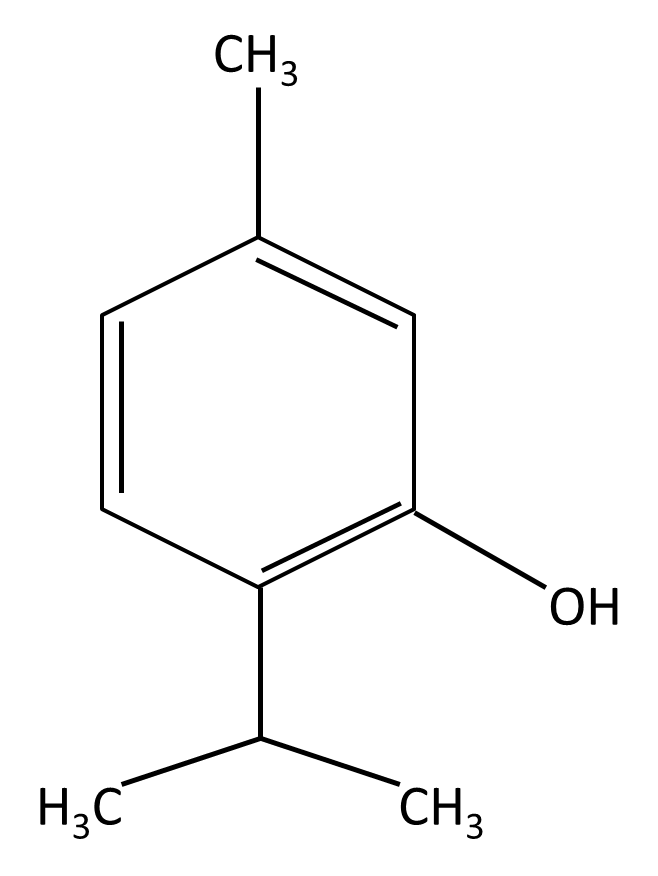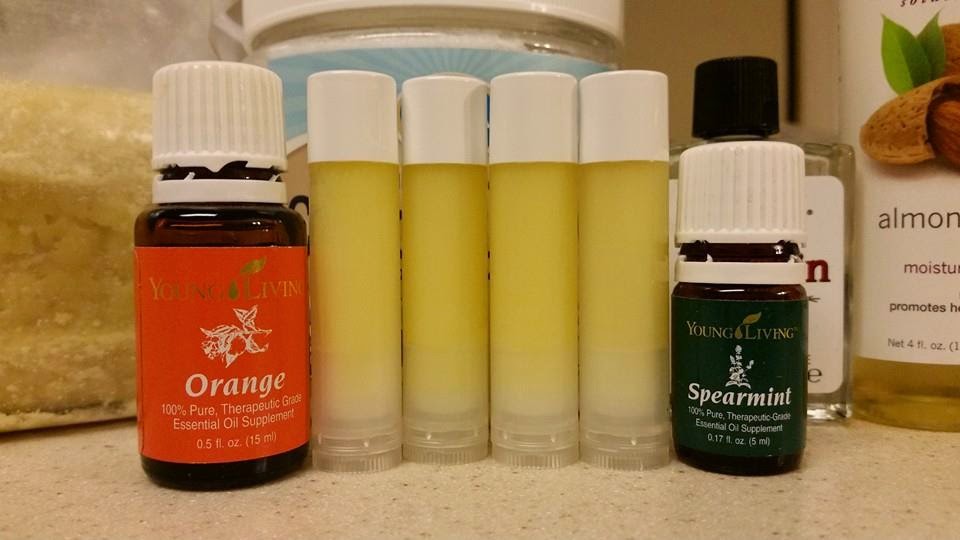I found an article on menthol, which is a component of peppermint EO, and it explained the science behind menthol's cooling sensation.
Click the link to read it: menthol
If you enjoy learning about new topics, IFL is a great site to follow. They post articles on various scientific topics including health and medicine, environment, space, and more.
Friday, January 23, 2015
Thursday, January 22, 2015
Thymol
Time for some science :) I am going to review thymol, what it is, what it is found in, its antimicrobial properties, and its potential use in the poultry industry.
Thymol (also known as 2-isopropyl-5-methylphenol), pronounced: \ˈthī-ˌmȯl, -ˌmōl\
This is a monoterpene phenol found in thyme essential oil (EO). Monoterpenes are a fancy name for describing a specific class of compounds based on structure (just like proteins describe a specific class of compounds). Below is the structure of thymol.
Thymol constitutes 37-55% of thyme essential oil. Thymol can also be found in oregano oil (0-5%) and mountain savory oil (14-24%).
Thyme is a common herb used in cooking and can be found in several seasoning blends. It is also pretty easy to grow in the garden. Thyme has a long history and has been used by the Egyptians, Greeks, Romans, and during the Middle Ages.
Thymol is found in several commercial products including:
Vicks Vapor Rub - It is listed as an inactive ingredient, along with nutmeg oil
Listerine Cool Mint Mouthwash - Also included in this mouthwash are several compounds that are found in essential oils (eucalyptol: found in eucalyptus EO, menthol: found in peppermint EO, and methyl salicylate: found in wintergreen EO)
EcoSmart Organic Home Pest Control - Contains thyme oil, and it also has clove, rosemary, and peppermint oils
Thymol is also commonly found in over-the-counter products for removing nail fungus.
Numerous scientific studies have shown that thymol can inhibit bacterial growth. As you can see in the graph below, when the concentration of thymol increased from 0 to 1000 parts per million (ppm), there was a corresponding decrease in bacterial growth. This inhibition of growth was seen in several pathogenic species of bacteria including: Escherichia coli, Salmonella Typhimurium, and Clostridium difficile. Most of the bacteria tested were unable to grow at concentrations greater than 300 ppm of thymol. Other scientific studies showing antimicrobial effects of thymol include: Mith et al 2013; Wells et al 2014; Grilli et al 2012; Shaw et al 2012; and Olasupo et al 2003. In addition to bacteria, thymol can also inhibit fungus and molds (Klaric et al 2007).
Thymol is one of several essential oil-based compounds, along with trans-cinnamaldehyde, eugenol, and carvacrol, being investigated by the poultry industry as a way to prevent bacterial contamination of poultry products (Venkitanarayanan, et al 2013). Salmonella and Camplyobacter are two major bacterial contaminants of poultry products (remember, your mom probably told you not to eat raw cookie dough), and the poultry industry is looking for a way to limit bacterial growth and contamination of chickens and thus reduce human disease.
This post has been a brief overview of thymol, its use in commercial products, its antimicrobial activity, and its use in the poultry industry. Many other potential applications of thymol exist that I have not discussed (did you really want to read about cow manure?) I hope you have a better understanding of thymol and the potential applications of essential oils.
Thanks for stopping by!
What is it?
Thymol (also known as 2-isopropyl-5-methylphenol), pronounced: \ˈthī-ˌmȯl, -ˌmōl\
This is a monoterpene phenol found in thyme essential oil (EO). Monoterpenes are a fancy name for describing a specific class of compounds based on structure (just like proteins describe a specific class of compounds). Below is the structure of thymol.
Thymol constitutes 37-55% of thyme essential oil. Thymol can also be found in oregano oil (0-5%) and mountain savory oil (14-24%).
Thyme is a common herb used in cooking and can be found in several seasoning blends. It is also pretty easy to grow in the garden. Thyme has a long history and has been used by the Egyptians, Greeks, Romans, and during the Middle Ages.
What is it found in?
Thymol is found in several commercial products including:
Vicks Vapor Rub - It is listed as an inactive ingredient, along with nutmeg oil
Listerine Cool Mint Mouthwash - Also included in this mouthwash are several compounds that are found in essential oils (eucalyptol: found in eucalyptus EO, menthol: found in peppermint EO, and methyl salicylate: found in wintergreen EO)
EcoSmart Organic Home Pest Control - Contains thyme oil, and it also has clove, rosemary, and peppermint oils
Thymol is also commonly found in over-the-counter products for removing nail fungus.
Thymol: Antimicrobial Properties
Numerous scientific studies have shown that thymol can inhibit bacterial growth. As you can see in the graph below, when the concentration of thymol increased from 0 to 1000 parts per million (ppm), there was a corresponding decrease in bacterial growth. This inhibition of growth was seen in several pathogenic species of bacteria including: Escherichia coli, Salmonella Typhimurium, and Clostridium difficile. Most of the bacteria tested were unable to grow at concentrations greater than 300 ppm of thymol. Other scientific studies showing antimicrobial effects of thymol include: Mith et al 2013; Wells et al 2014; Grilli et al 2012; Shaw et al 2012; and Olasupo et al 2003. In addition to bacteria, thymol can also inhibit fungus and molds (Klaric et al 2007).
Thymol in the Poultry Industry
Thymol is one of several essential oil-based compounds, along with trans-cinnamaldehyde, eugenol, and carvacrol, being investigated by the poultry industry as a way to prevent bacterial contamination of poultry products (Venkitanarayanan, et al 2013). Salmonella and Camplyobacter are two major bacterial contaminants of poultry products (remember, your mom probably told you not to eat raw cookie dough), and the poultry industry is looking for a way to limit bacterial growth and contamination of chickens and thus reduce human disease.
Closing
This post has been a brief overview of thymol, its use in commercial products, its antimicrobial activity, and its use in the poultry industry. Many other potential applications of thymol exist that I have not discussed (did you really want to read about cow manure?) I hope you have a better understanding of thymol and the potential applications of essential oils.
Thanks for stopping by!
Wednesday, January 14, 2015
Homemade Lip Balm
I made my own lip balm. I bought all of the supplies on Amazon, including the lip balm tubes. I used a kitchen scale (if you do not have one, you should get one) to weigh the ingredients.
Recipe:
Recipe:
10 g raw, honey-scented beeswax (I used beeswax pellets)
12 g coconut oil (make sure it smells like coconut)
7 g cocoa butter (the more fragrant, the better)
19 g sweet almond oil
1 g Vitamin E oil
12 g coconut oil (make sure it smells like coconut)
7 g cocoa butter (the more fragrant, the better)
19 g sweet almond oil
1 g Vitamin E oil
- Gently melt everything together in a double boiler (I used a glass measuring cup with a pour spout to melt everything in)
- After everything is melted, add 15 drops of essential oil
Try: Orange, peppermint, spearmint, grapefruit, or cinnamon essential oil - Pour into lip balm tubes (this will fill 10)
- Let solidify and enjoy
Subscribe to:
Posts (Atom)


